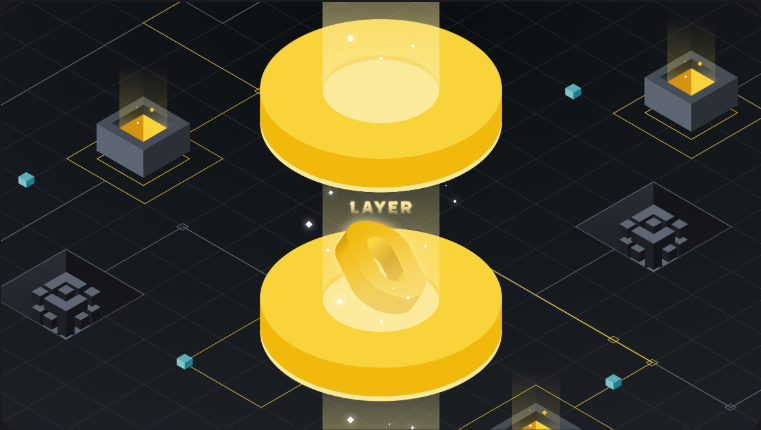
Summary
Layer 0 protocols are essentially the infrastructure upon which Layer 1 blockchains can be built. As the foundational layer of blockchain networks and applications, Layer 0 protocols are among the many solutions dedicated to addressing challenges faced by the industry, such as scalability and interoperability.
Introduction
What constitutes a blockchain ecosystem? One way to categorize the components of a blockchain ecosystem is to view it as an internet protocol and classify it by layers.
The blockchain ecosystem can be categorized into the following layers:
Layer 0: The underlying infrastructure upon which multiple Layer 1 blockchains can be built.
Layer 1: The foundational blockchain used by developers to build applications such as decentralized applications (DApps).
Layer 2: Scaling solutions that handle Layer 1 blockchain activities to alleviate its transaction load.
Layer 3: The application layer based on blockchain, including games, wallets, and other DApps.
However, not all blockchain ecosystems fit into these categories. Depending on the context, some ecosystems may lack certain layers, while others may be classified differently.
Layer 0 protocols help address the challenges faced by Layer 1 networks built on a single infrastructure, such as the Ethereum network. By creating a more flexible infrastructure and allowing developers to launch their own dedicated blockchains, Layer 0 aims to more effectively solve issues like scalability and interoperability.
What Problems Can Layer 0 Solve?
Interoperability
Interoperability refers to the ability of blockchain networks to communicate with one another. With this attribute, networks supporting blockchain-based products and services can be more tightly integrated, thereby providing a better user experience.
By default, blockchain networks built on the same Layer 0 protocol can interact with each other without the need for specialized bridges. Layer 0 uses different iterations of cross-chain transfer protocols, enabling individual blockchains within a single ecosystem to build upon each other's functionalities and use cases. The general outcome of this is improved transaction speed and efficiency.
Scalability
Large blockchains like Ethereum, where a single Layer 1 protocol handles all major functions such as transaction execution, consensus, and data availability, often face congestion. This creates a scalability bottleneck, which Layer 0 alleviates by delegating these major functions to different blockchains.
This design ensures that blockchain networks built on the same Layer 0 infrastructure can each optimize specific tasks, thereby improving scalability. For example, an execution chain can be optimized to increase the number of transactions processed per second.
Developer Flexibility
To encourage developers to build on it, Layer 0 protocols provide easy-to-use software development kits (SDKs) and seamless interfaces, ensuring developers can easily launch their own dedicated blockchains.
Layer 0 protocols offer developers significant flexibility in customizing their blockchains. They can customize token issuance models and decide the types of DApps they plan to build on the blockchain.
How Do Layer 0 Protocols Work?
Layer 0 protocols can operate in various ways, each with different designs, functionalities, and focuses.
Generally, however, Layer 0 protocols serve as the primary foundational blockchain capable of backing up transaction data from various Layer 1 chains. With clusters of Layer 1 chains built on the Layer 0 protocol and cross-chain transfer protocols, tokens and data can be transferred across different blockchains.
The structure and relationships of these three components vary significantly across different Layer 0 protocols. Let’s look at the following examples:
Polkadot
Designed by Ethereum co-founder Gavin Wood, Polkadot allows developers to build their own blockchains. The protocol uses a main chain called the "Polkadot Relay Chain," while the independent blockchains built on Polkadot are called "parachains."
The Relay Chain acts as a bridge between parachains to enable efficient data communication. The Relay Chain employs sharding, a method of splitting blockchains or other types of databases, to improve transaction processing efficiency.
Polkadot uses Proof-of-Stake (PoS) validation to ensure network security and consensus. Projects looking to build on Polkadot must participate in slot auction bids. Polkadot's first parachain project was approved in an auction in December 2021.
Avalanche
Launched in 2020 by Ava Labs, Avalanche focuses on DeFi protocols. Avalanche adopts a triple-blockchain infrastructure consisting of three core chains: the Contract Chain (C-Chain), the Exchange Chain (X-Chain), and the Platform Chain (P-Chain).
These three chains are specially configured to handle the ecosystem's major functions, enhancing security while reducing latency and increasing throughput. The X-Chain is used for creating and trading assets, the C-Chain for creating smart contracts, and the P-Chain for coordinating validators and subnets. Due to its flexible structure, Avalanche also enables fast and low-cost cross-chain exchanges.
Cosmos
Founded in 2014 by Ethan Buchman and Jae Kwon, the Cosmos network includes a Proof-of-Stake blockchain mainnet called the "Cosmos Hub" and customized blockchains called "zones." The Cosmos Hub can transfer assets and data between interconnected zones, providing a shared security barrier.
Each zone is highly customizable, allowing developers to design their own cryptocurrencies, customize block validation settings, and other features. All Cosmos applications and services hosted in zones interact via the Inter-Blockchain Communication (IBC) protocol. This enables assets and data to be freely exchanged between independent blockchains.
Conclusion
Depending on their design, Layer 0 blockchains have the potential to address various industry challenges such as interoperability and scalability. However, how far the adoption of Layer 0 blockchains will succeed remains to be seen. There are numerous other solutions in the industry competing to achieve similar goals.
The extent to which Layer 0 blockchains can address industry challenges will depend on their ability to attract developers to build on these protocols and whether the applications hosted on them can deliver real value to users.
















